Back in August 2021, I went on an island hopping trip in Denmark with an old friend of mine. We explored two islands off the northeast coast of Jutland, Læsø and Hirsholm, both of which neither of us had visited before.
The first three days were spent on Læsø, the largest island in the Kattegat Sea. The island is renowned for its unique seaweed-roofed half-timbered cottages made of wood from grounded ships. It’s also well-known for its historic salt production, and its vast unspoilt nature.

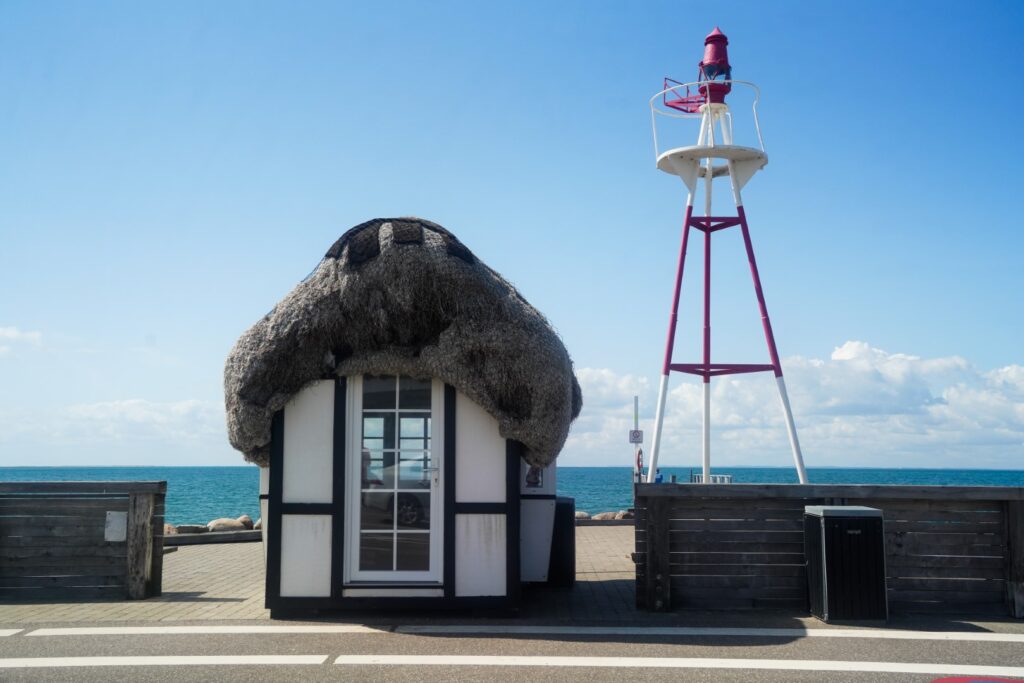
Byrum and Thorvald Hansens Tower
We arrived on Læsø shortly before midday on a Tuesday. We rented bikes by the harbour and biked to Badesøen, a little inland lake where camping is permitted for free. We set up our tent in this idyllic location, and then headed to Byrum, one of three villages on the island, and the only one without access to the sea.
Byrum is home to the Thorvald Hansens Tower, built in 1927 by Thorvald Hansen as he wanted the view of the island that he remembered as a child before Byrum expanded and blocked the view! Now it’s a popular tourist destination as it offers a wonderful view of the village and island interior!
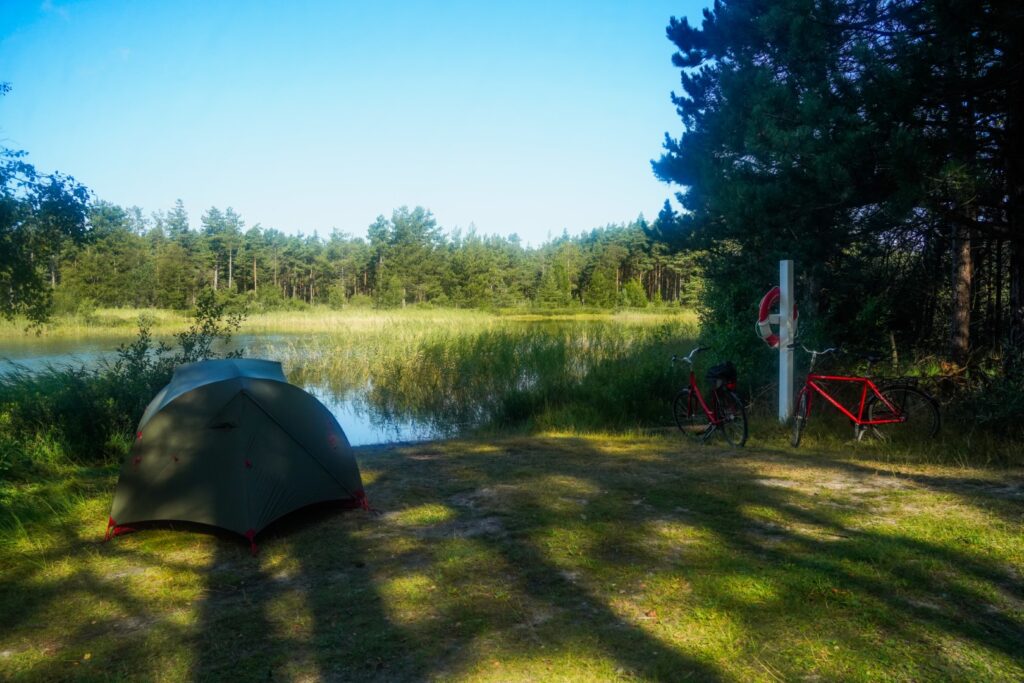
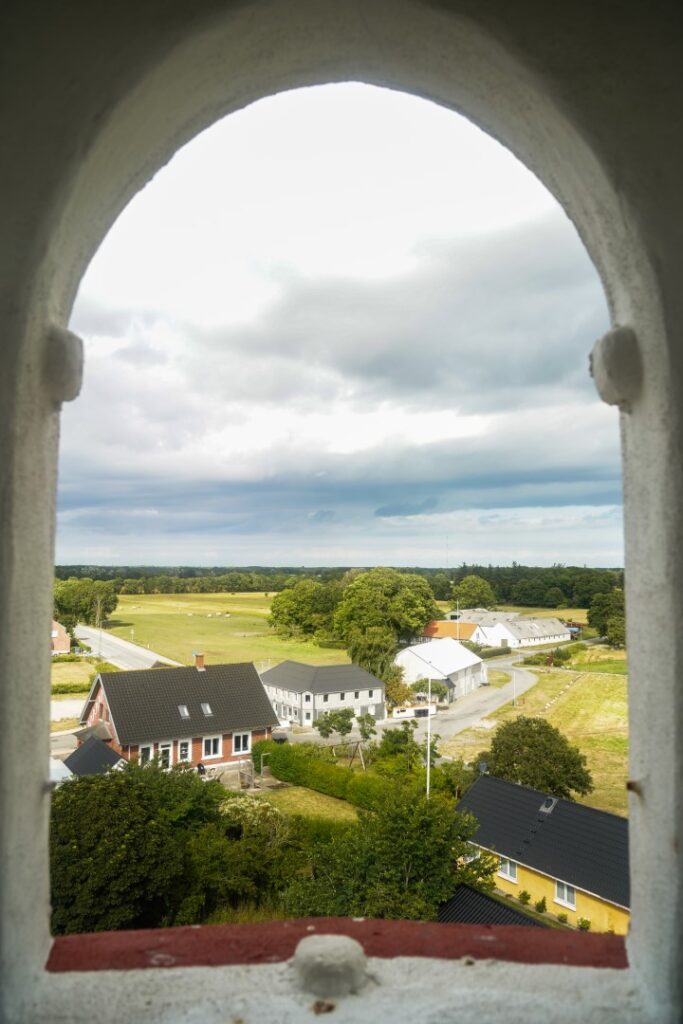
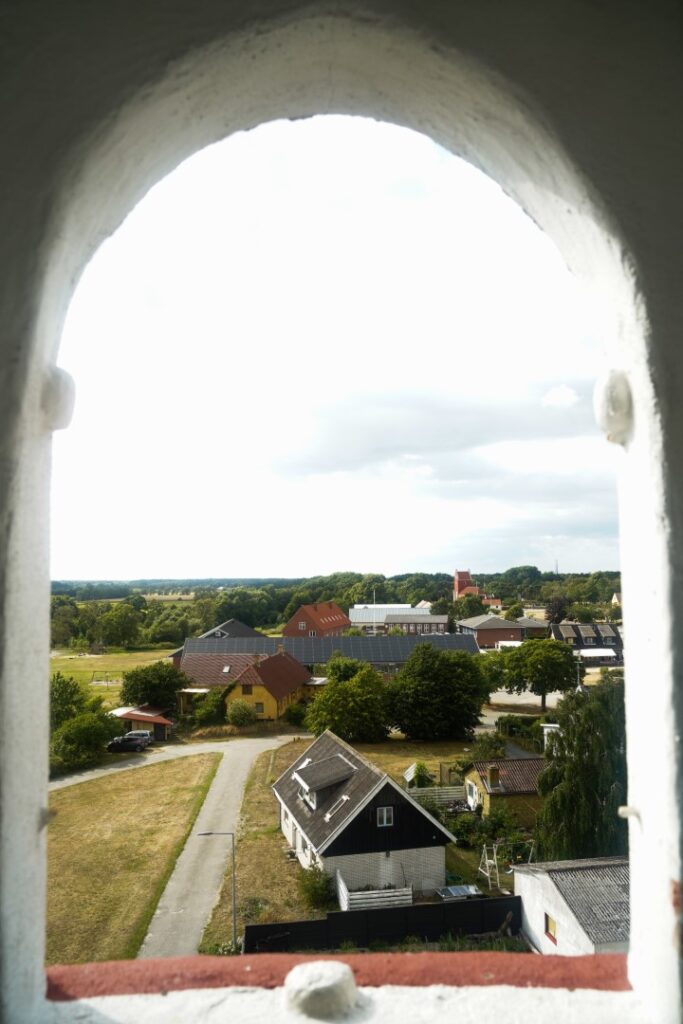
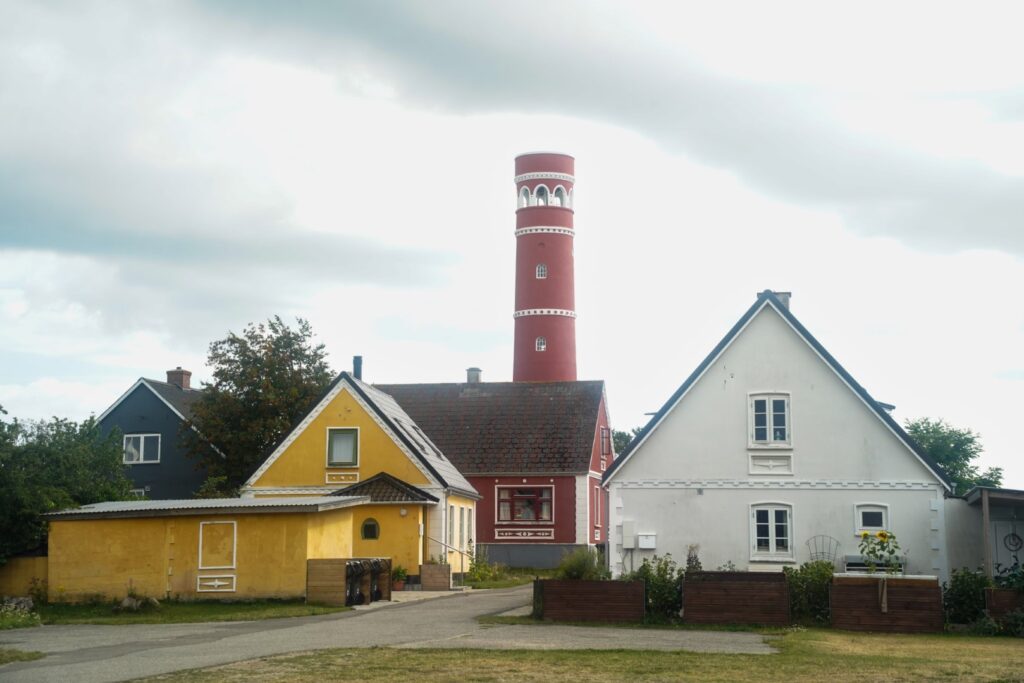
A visit to Læsø Saltworks
As I mentioned in the intro, Læsø is renowned for its salt production, originating in the Medieval period.
We visited Læsø Saltworks, a working museum showcasing the traditional production of pan salt as it was done on the island between the 12th and the 17th centuries. The working museum opened in 1991 and still produces salt in accordance with traditional recipes.
Unfortunately, the museum was closed when we arrived, but it was still possible for us to explore the salt huts and climb a little tower for a view over the museum.

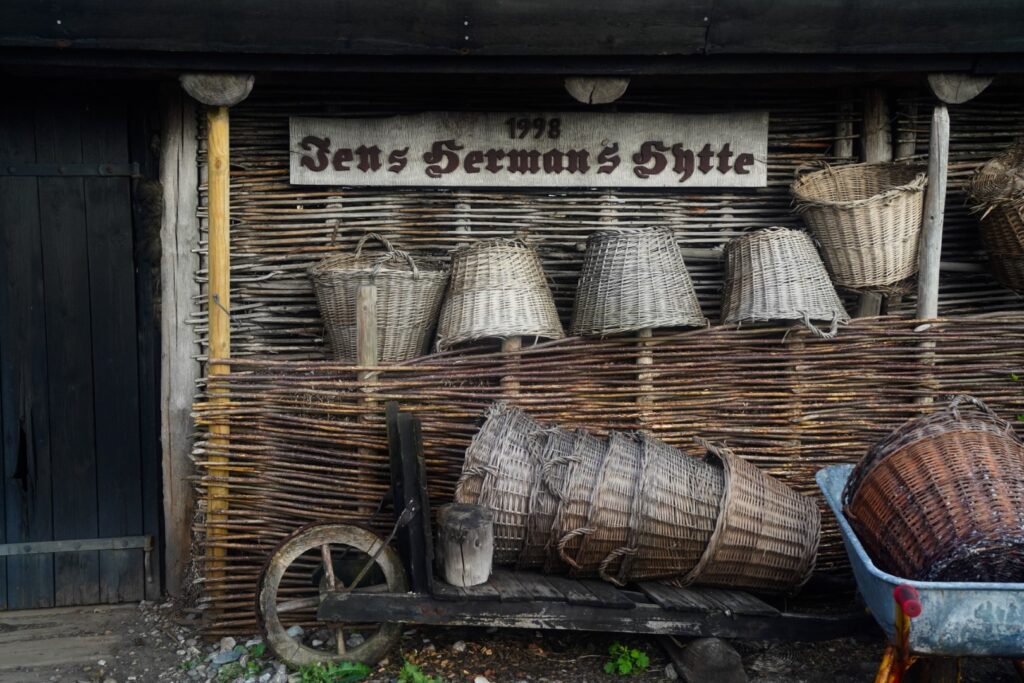
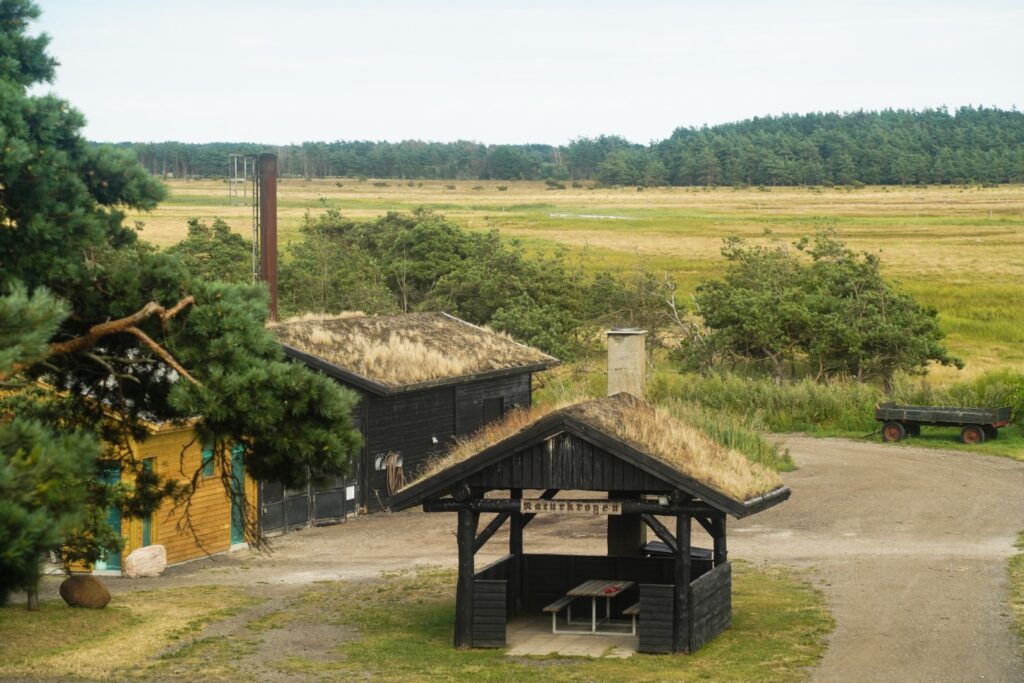
Wading out to Rønnerne
We continued on our bikes, heading to the southern part of the island where the land is flat and the water shallow. We parked our bikes by the beach and walked into the warm water, over three small islands to a larger one with a building of some sort.
This area is a large wetland known as Rønnerne, consisting of the four islands of Færøn, Langerøn, Kringelrøn and Hornfiskrøn, as well as heaths and extensive salt meadows where salt boiling took place in the Medieval period. It’s only possible to reach the islands on foot through the water as it’s too shallow for boats.
We rested for a while in the sun, and then explored the larger of the islands where we ran into a few of the inhabitants, a group of curious cows!
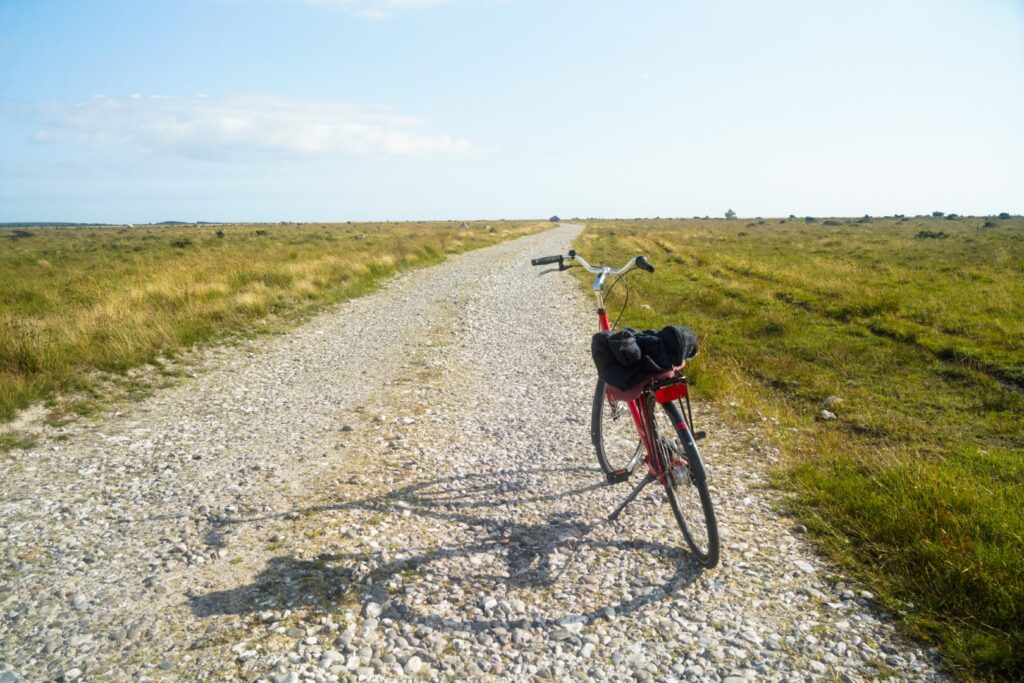
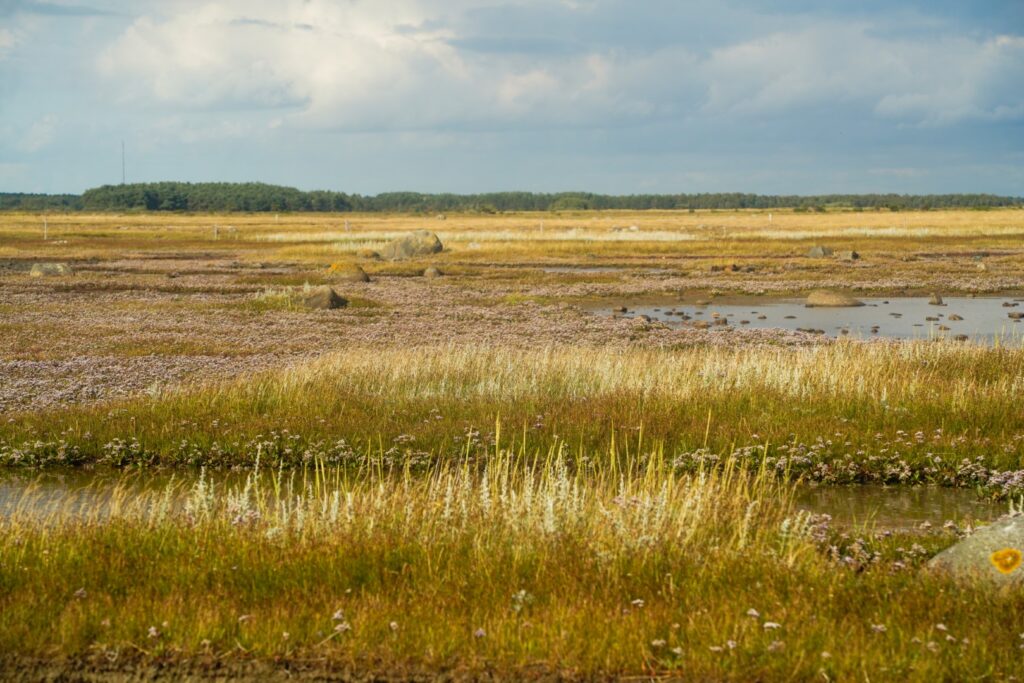
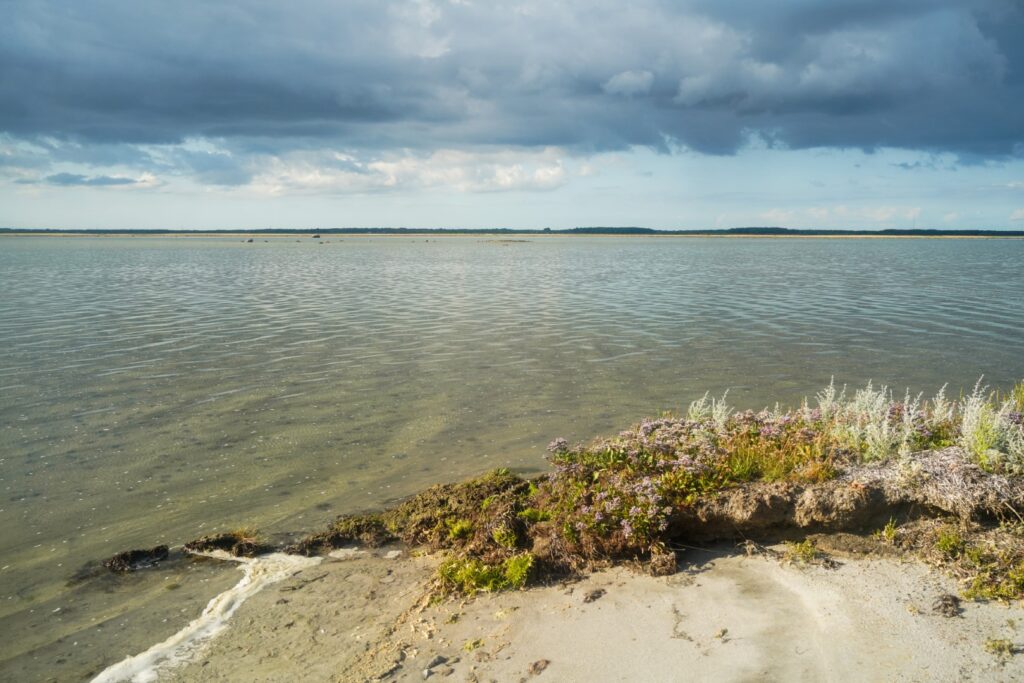
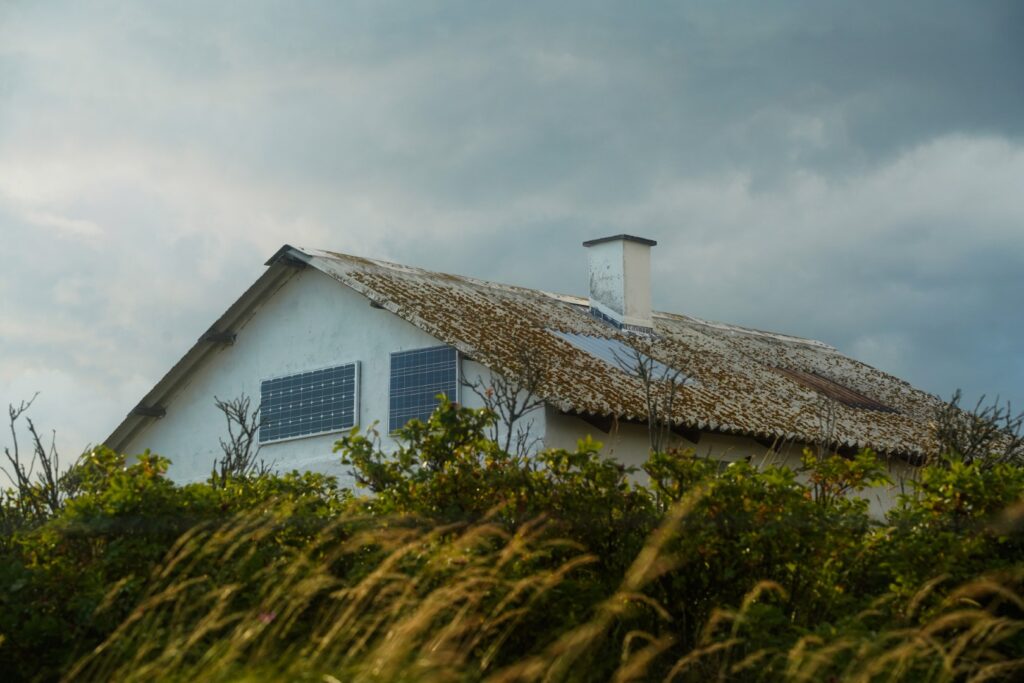
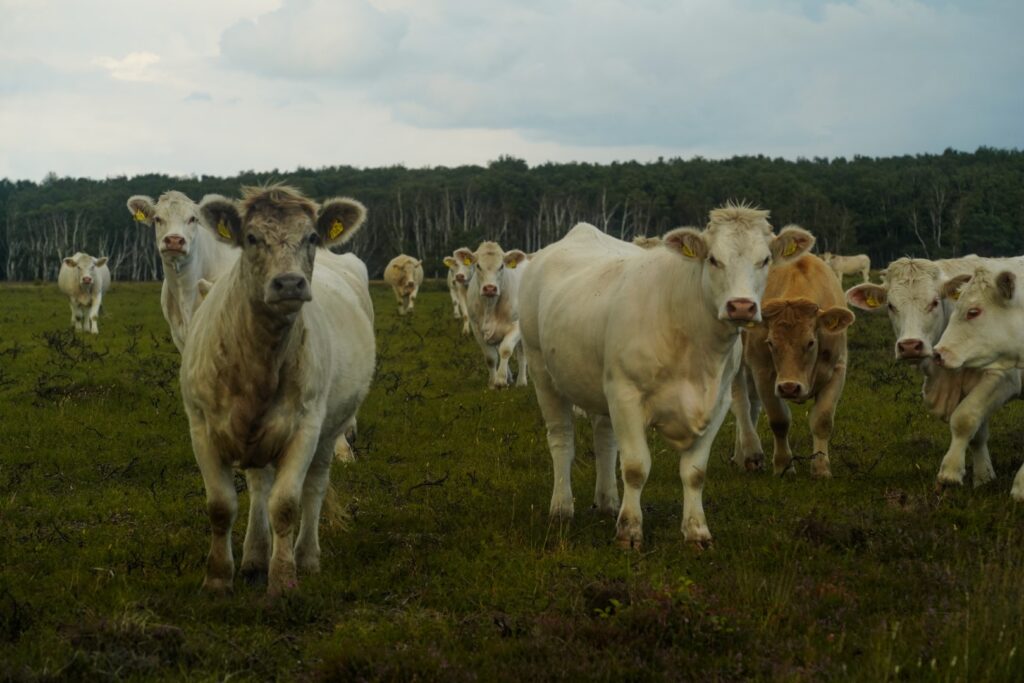
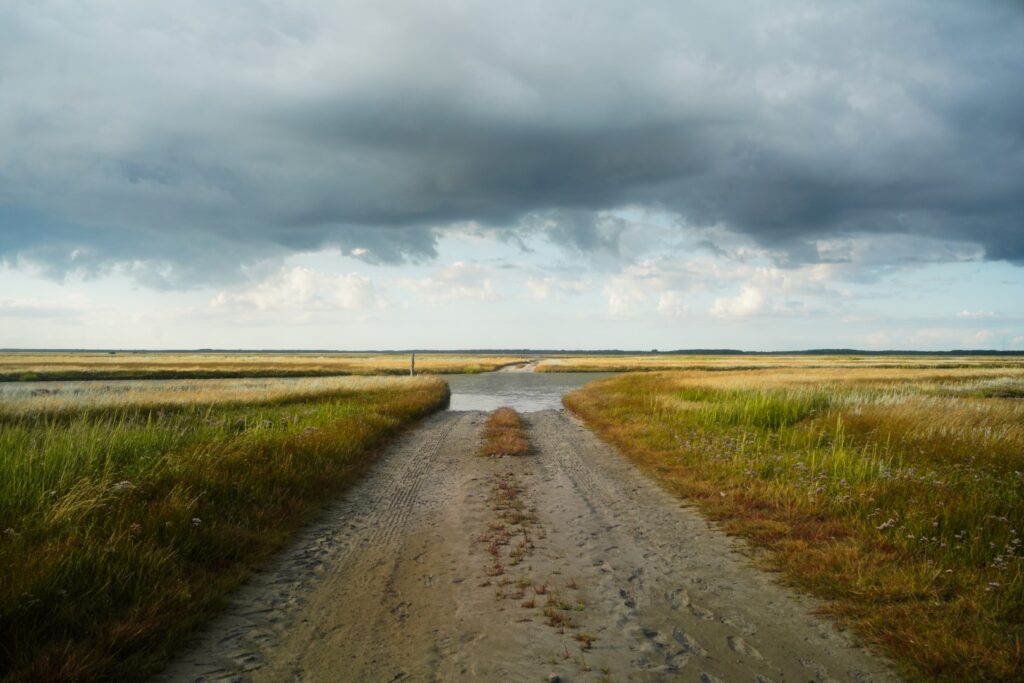
Refuge at Storhaven Café
As we headed back to the “mainland”, we were surprised by a heavy rainfall. Thankfully, it was the only moment of bad weather on the entire trip, but it was enough for us to seek refuge at Læsø’s perhaps coziest café, Storhaven.
The café is set on an old farm in the middle of nowhere, and offers fresh coffee and hot chocolate, homemade baked goods, locally made ice cream (including ice cream made with seaweed!) and a cozy farm shop with local goods and crafts. But the best thing about Storhaven is all their animals! They have cats, rabbits, goats and many more adorable animals. A true paradise for an animal lover like me!

A return to Byrum
After a night by the little lake, we woke up to a sunny morning and biked back to Byrum to explore its red-washed church and visit the local thrift store, something the both of us love to do. We also stumbled upon an outdoor market with live music, which was a very cozy and unexpected experience!
The church is the largest of Læsø’s three churches, and the only one with vaults. It was built around 1200 by Cistercian monks from Vitskøl Kloster.
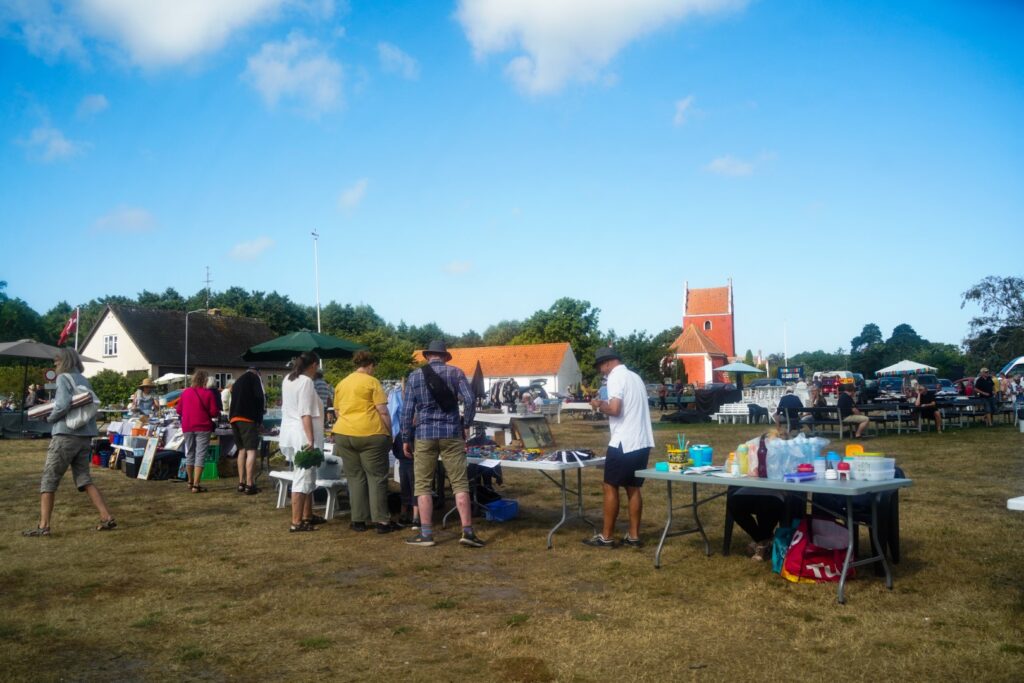
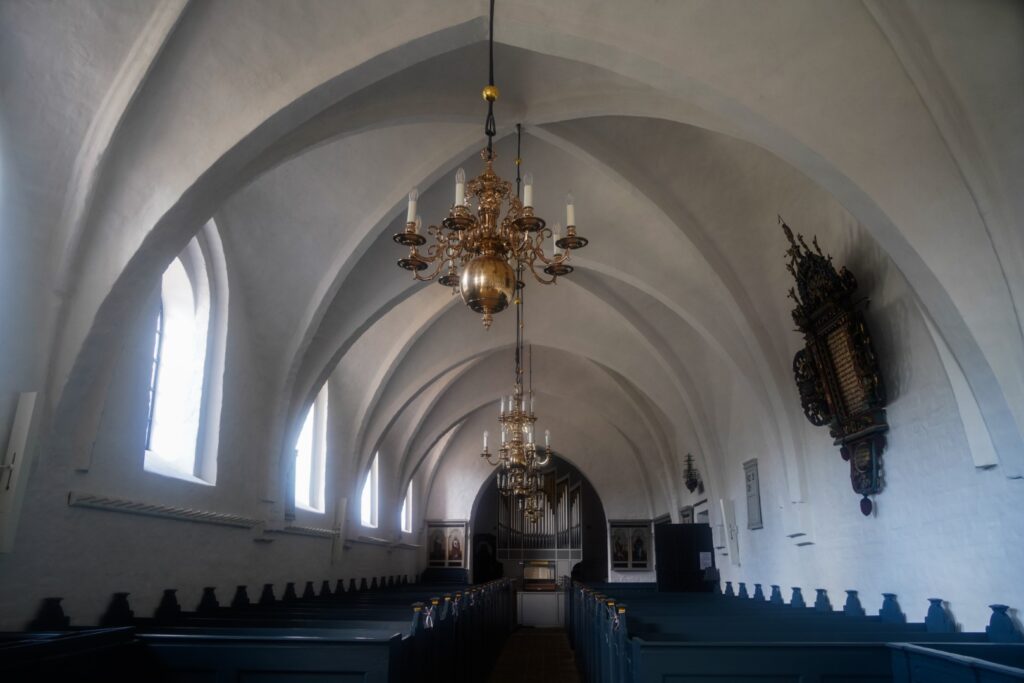
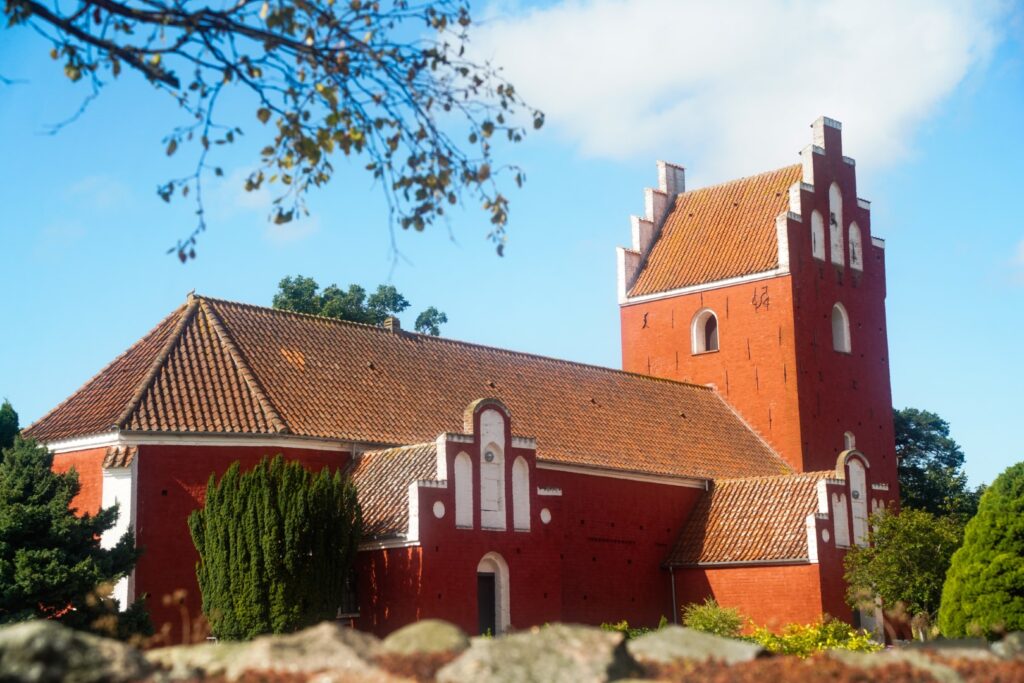
On a hunt for seaweed cottages
After our village visit, we continued into the countryside in the search of Læsø’s famous seaweed cottages. Their roofs are made of eelgrass, a type of seaweed, and are up to a metre thick and hang down low over the walls, making it look like the houses have giant wigs! Some of the seaweed roofs are over 300 years old.
The seaweed roofs are unique to Læsø, and the practice dates back to a time when the island was buried in a sandstorm and the air became full of sea salt, which inhibited the growth of plants. The sandstorm happened after the island had become devoid of trees due to the extensive salt production, in which the trees on the island were of great importance for fuel. Eventually, the last tree was cut down, and the salt industry soon collapsed.
Luckily, there was still plenty of seaweed around the island, and driftwood from shipwrecks was not uncommon to find along the beaches. So the inhabitants began using driftwood and clay from the island to build their houses, and bundles of weaved seaweed was used for the roofs. This was usually done by the women of the island while the men were out fishing, and therefore many of the houses are named after women.
Because the seaweed is full of salt, it can survive for hundreds of years, and over time, the roofs even become waterproof, windproof and fireproof!
In the 1920s, a fungal disease wiped out much of the seaweed around Læsø, causing a decline in this type of roofing. In the late 18th century, there were 250 homes with seaweed roofs, but now there are only 19 left, 11 of which are protected.
One of the best-preserved seaweed cottages is Museumsgården, which is also a museum showcasing the history of Læsø’s seaweed roofs. Another gorgeous seaweed cottage is Hedvigs Hus near the village of Østerby in the eastern part of the island.
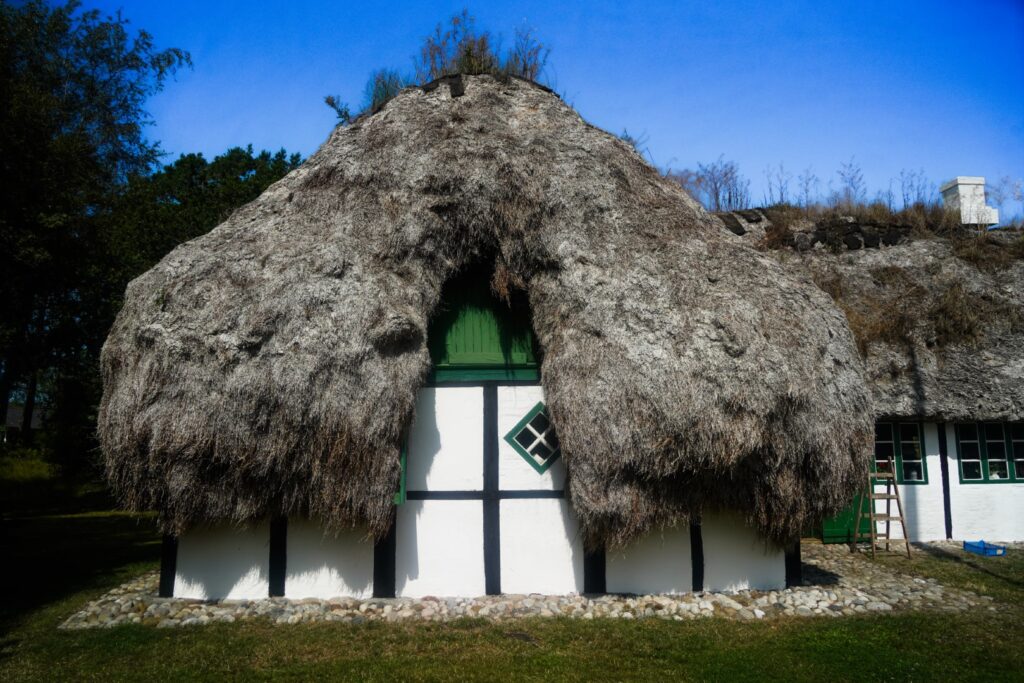
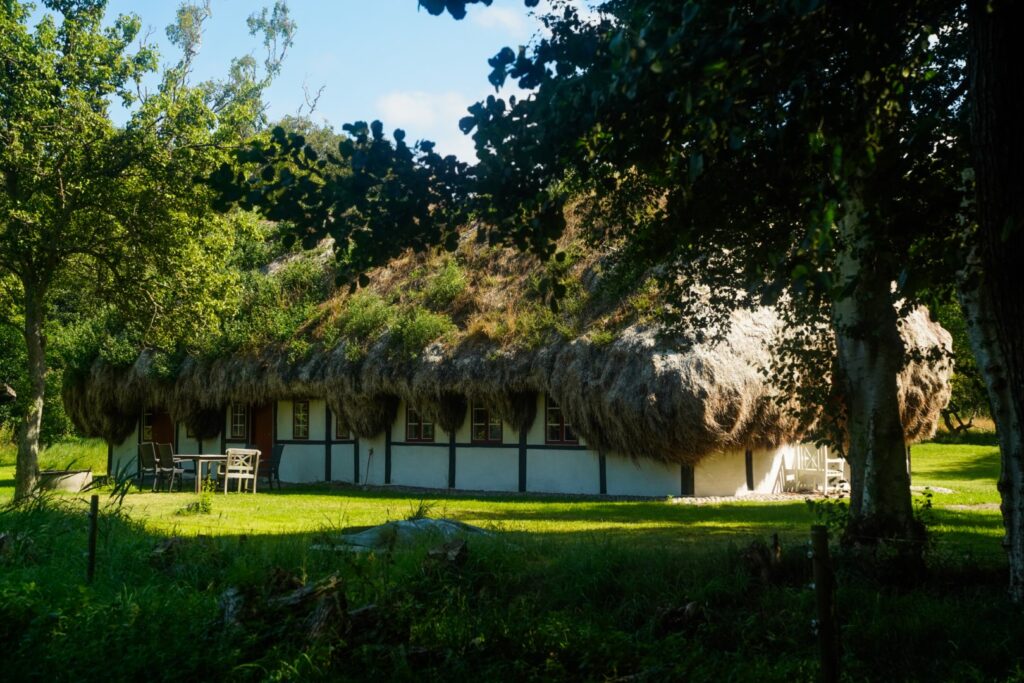

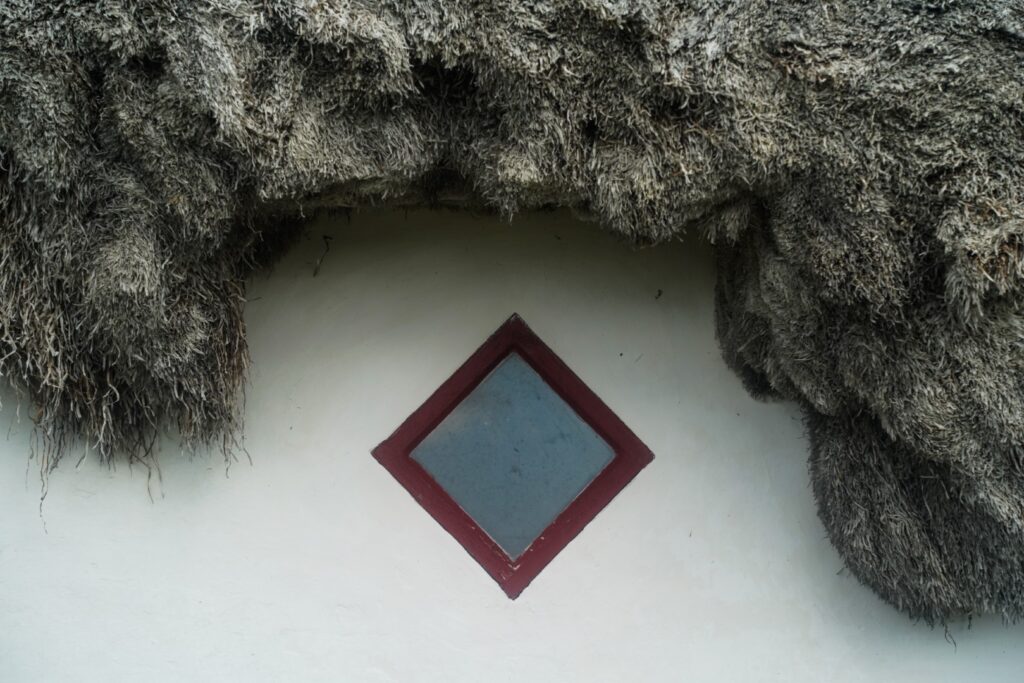
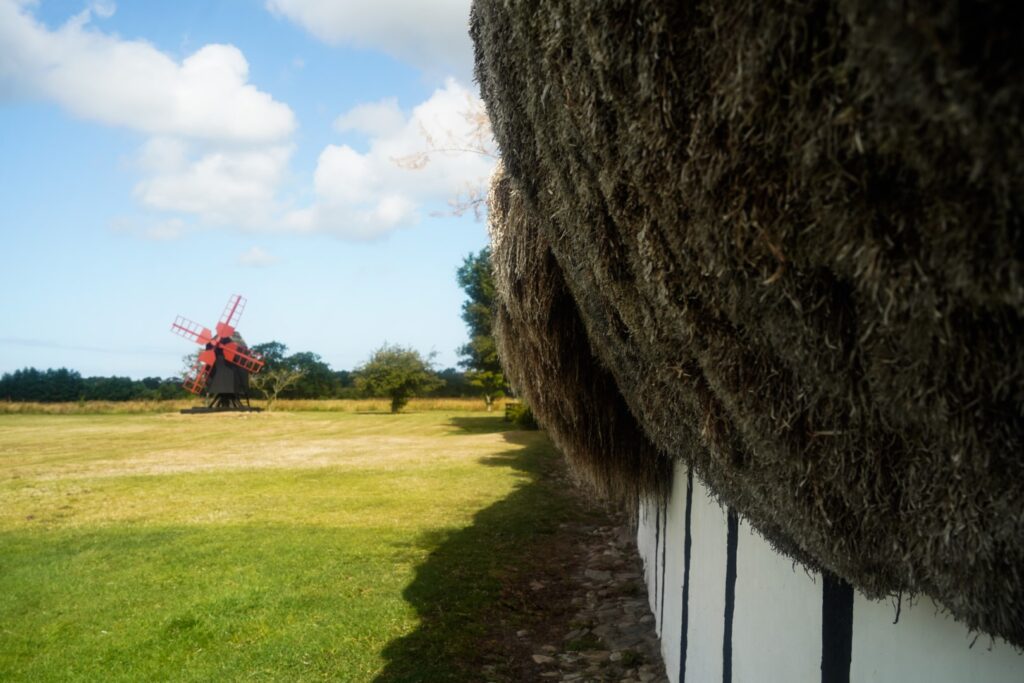
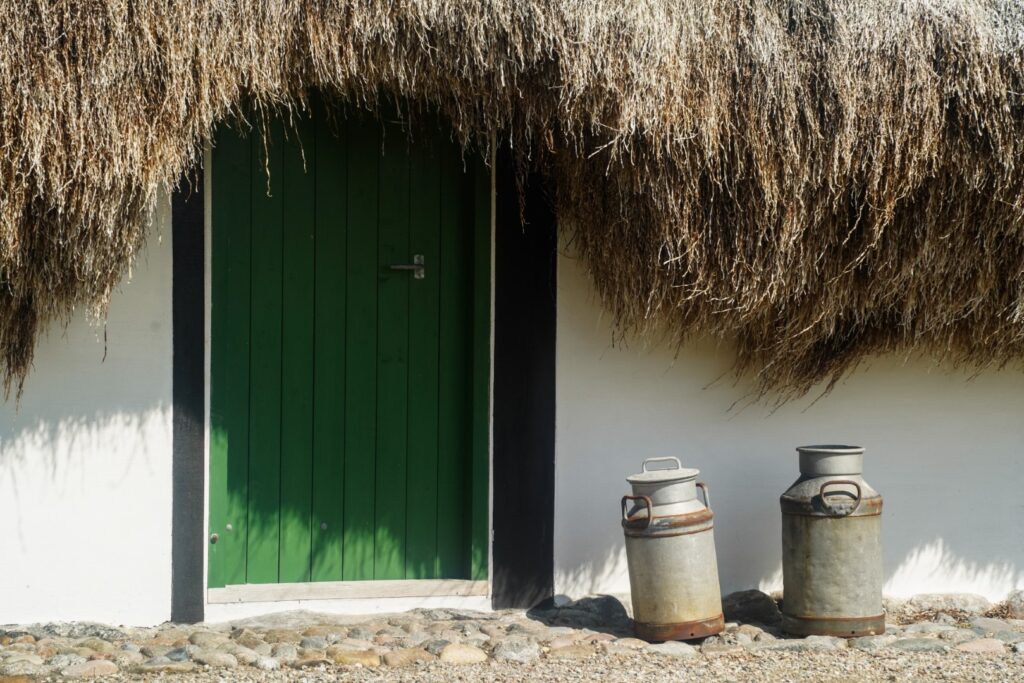
Østerby and a walk along the Bløden Hale headland
Around midday, we stopped in Østerby for some fries and a dip in the ocean. The village has a cozy harbour milieu and a beautiful beach with low dunes.
We then biked to the beach of Syrodde and walked five kilometres out to the edge of the headland, Bløden Hale. The headland is part of the extensive Bovet-Knotten wildlife refuge, which is home to many different fish species and waterfowl.
The water was crystal clear and the wind still. It made for a beautiful last activity of the day!
We ended the day with another visit to Storhaven to have ice cream and cuddle their adorable kitties before biking back to our tent at the lake!
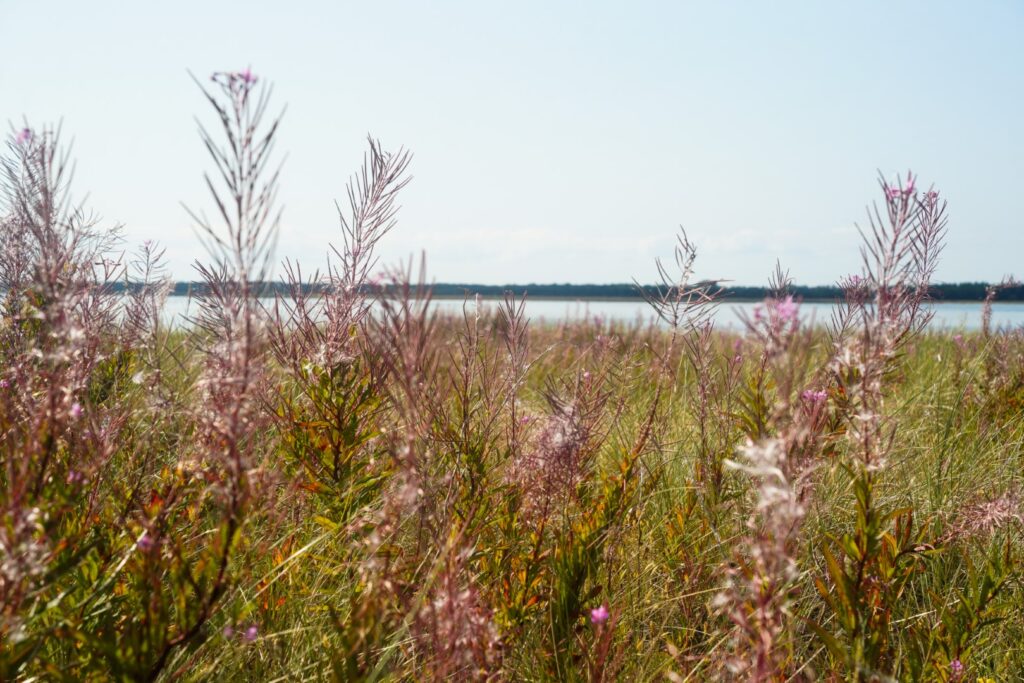
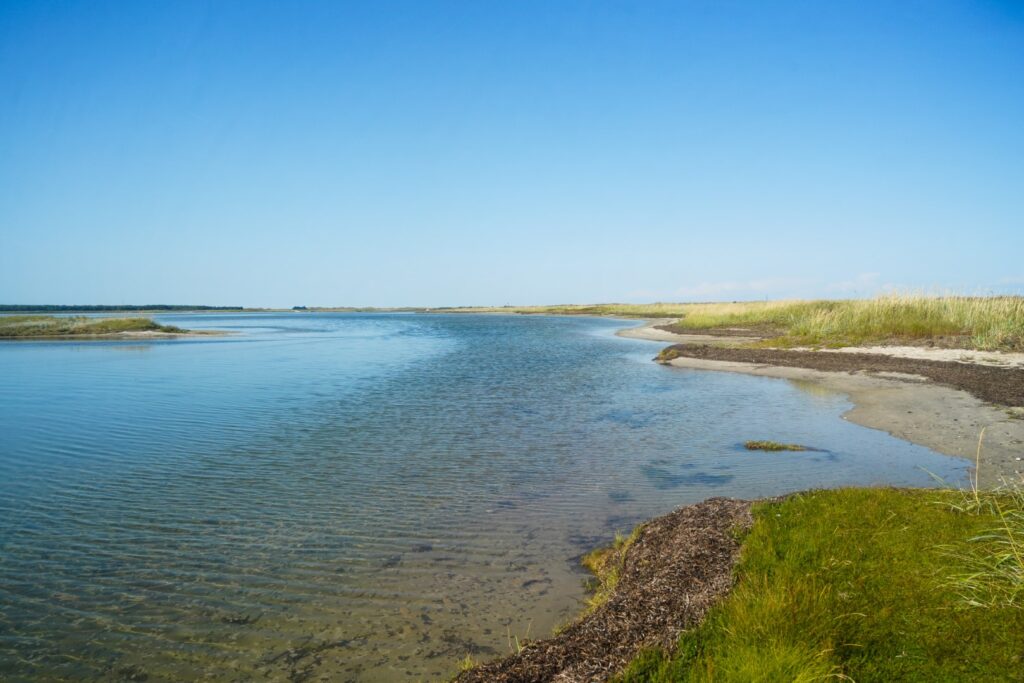
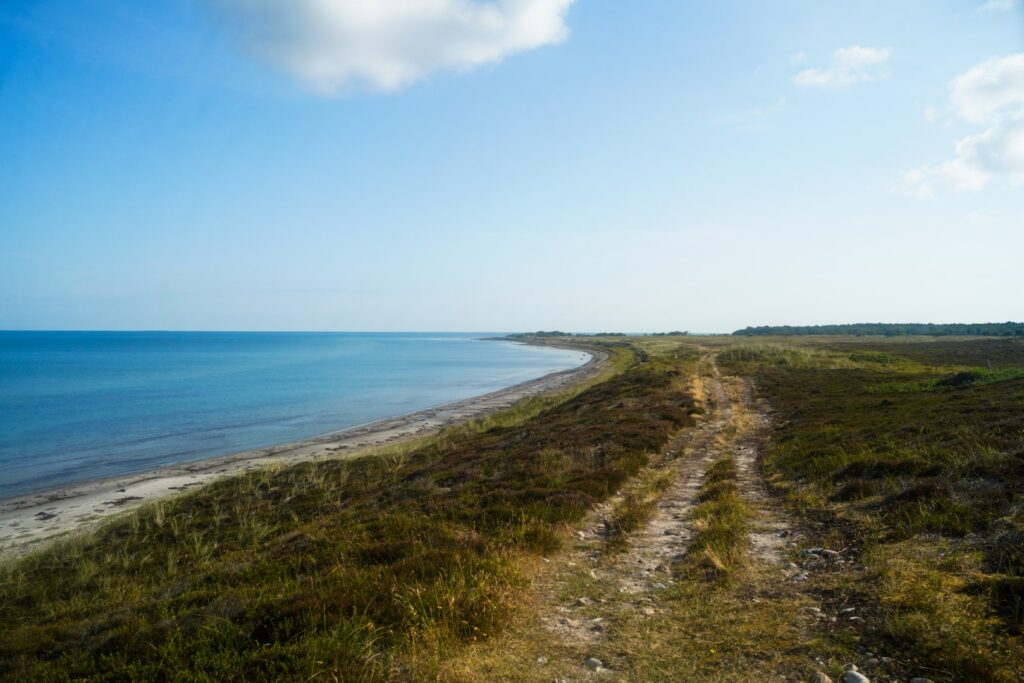
Horneks Odde and the lobster huts
On our last day on Læsø, we got up early and biked through a beautiful dune landscape, along a bumpy and sandy path to Horneks Odde on the north coast of the island.
The area is known for its small lobster huts that served as shelter for fishermen who caught black lobsters in the early 20th century. They were built using materials that had washed ashore, as well as natural materials from the sea, including seaweed for the roofs. The huts usually contained one or two bunks, a table, chair and a kettle, and before the motorboat came to the island, fishermen would often stay there for several days.
There were once eight to ten lobster huts in the area, but today, only two remain. One of them holds a small exhibition about the area.
Horneks Odde is also known as a good place for seal spotting, but unfortunately, luck was not on our side that day. However, we did see cormorants and even had a view to the islands of Nordre Rønner, including the lighthouse from 1880 on Spirholm, the only one of the islands that was once inhabited. It was abandoned in 1963.
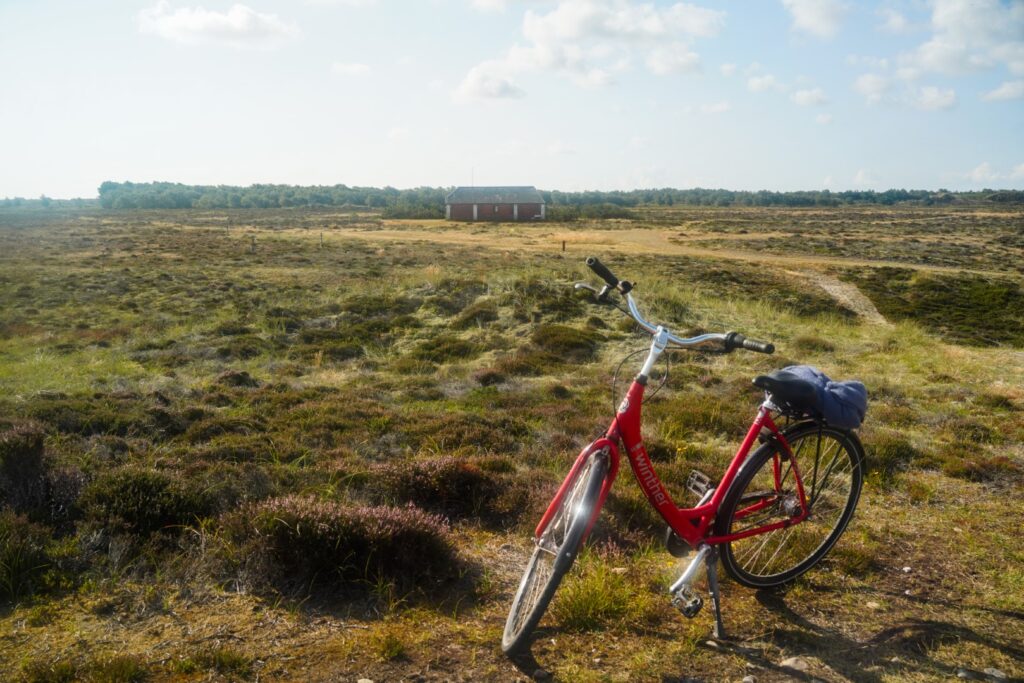
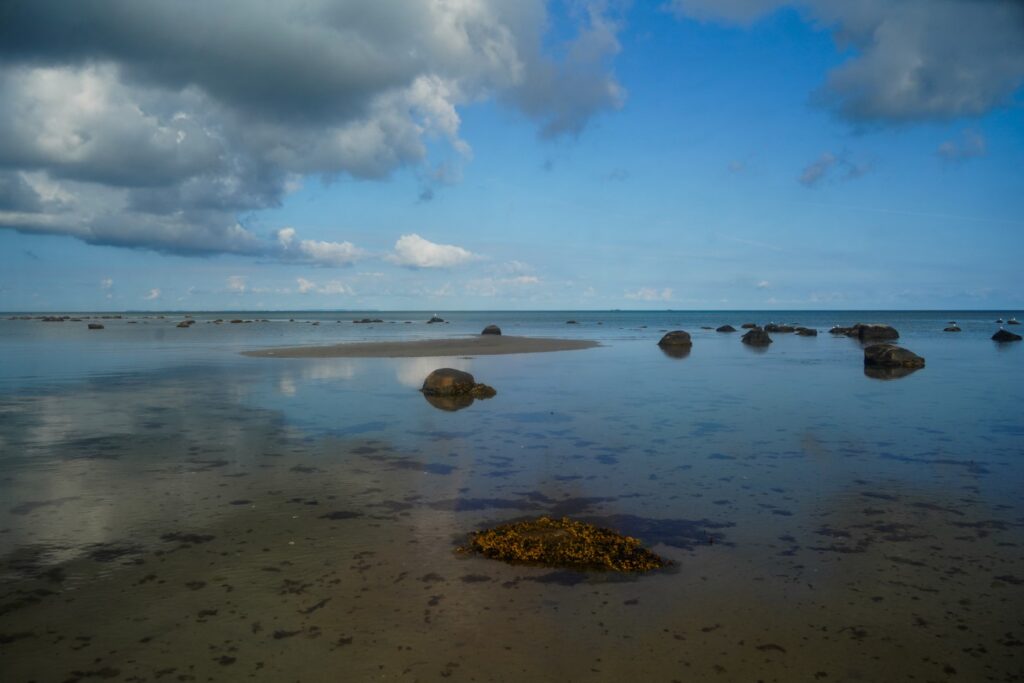
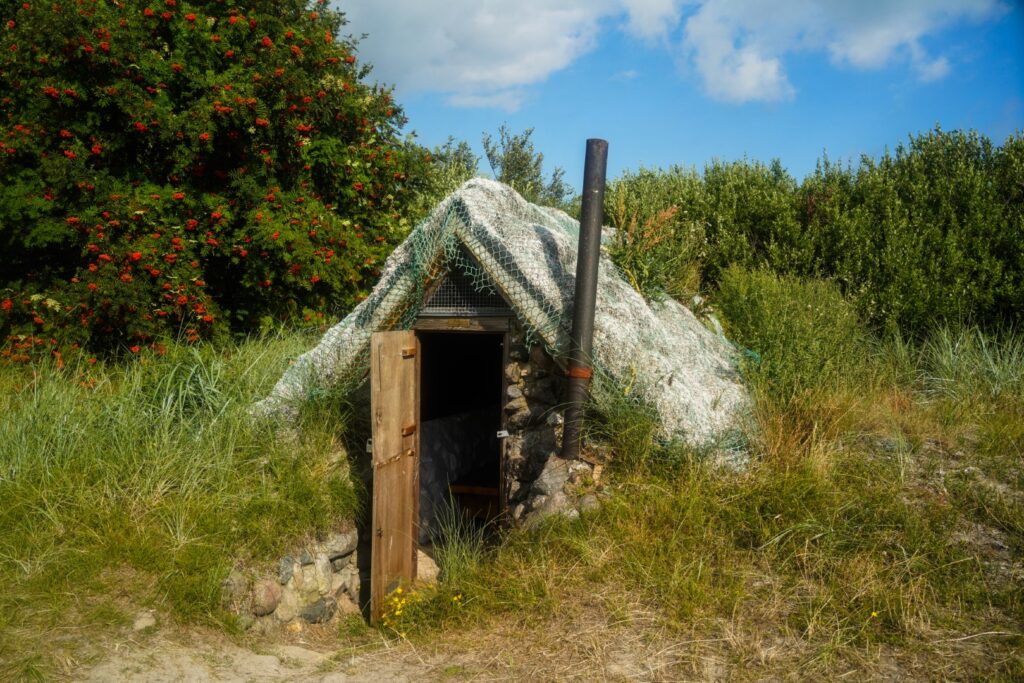
Through shallow waters to Stokken
After our visit to Horneks Odde, we biked back to the campsite, packed up our tent and headed to the last place we wanted to see on Læsø; an area in the southwest corner of the island with shallow waters and low-lying islands.
We waded through the calm water to a long island called Stokken, home to a gorgeous white sand beach. The weather was amazing, so we spent a while chilling on the beach and swimming in the ocean.
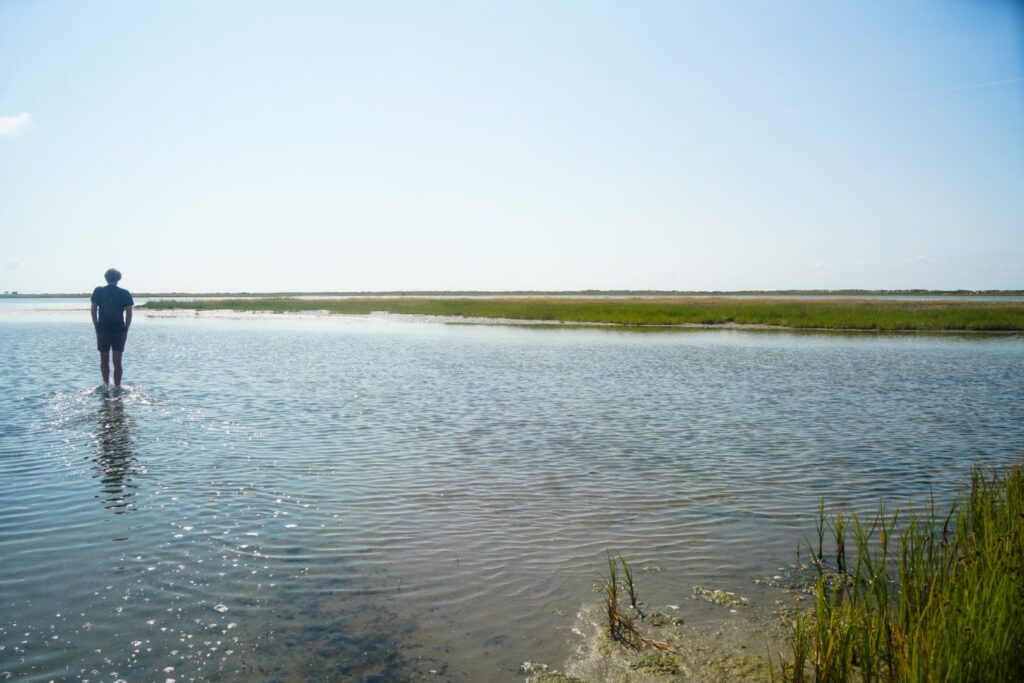
Exploring the Vesterø area
We continued our journey towards the village of Vesterø, and stopped by another red-washed church on the way, Vesterø Søndre Church. The church was built in 1250, also by munks from Vitskøl Kloster like the church in Byrum. The interior is decorated with frescoes and three votive ships hanging from the ceiling!
Our ferry reservation to go back to the mainland was at 3 PM that day, but we decided on a whim to postpone the trip for the next morning so we could spend one more night on Læsø! We set up our tent at a nearby farm for the small fee of 25 DKK per person.
In the evening, we biked to the harbour in Vesterø to soak up the atmosphere, eat some delicious fries and ice cream, go for a swim, and enjoy the most beautiful sunset we saw on the island. Definitely worth postponing the trip back for!
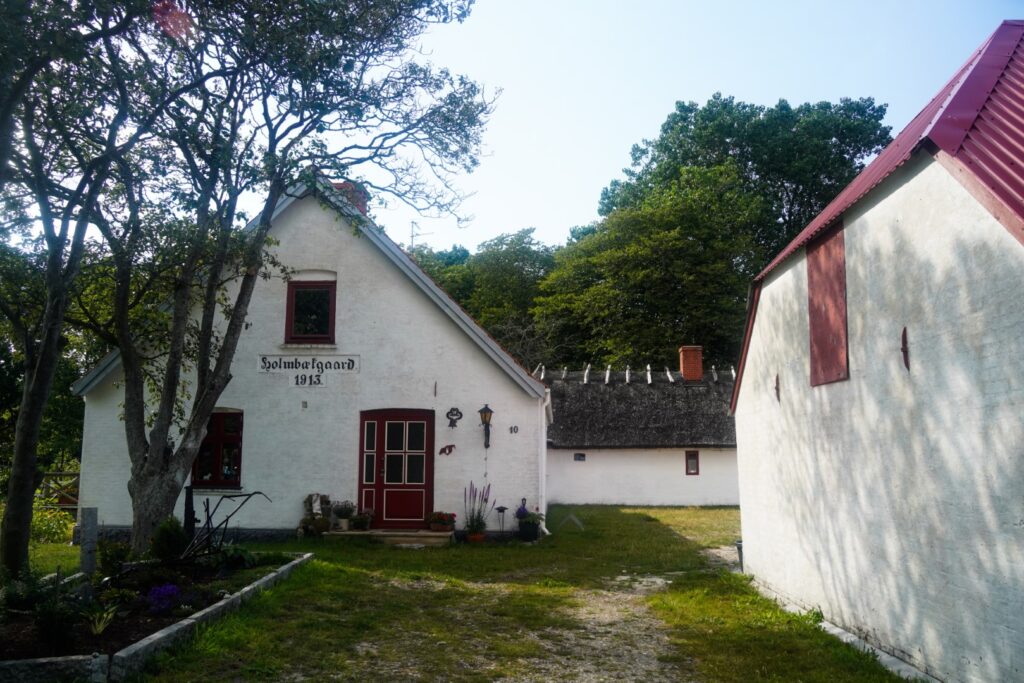
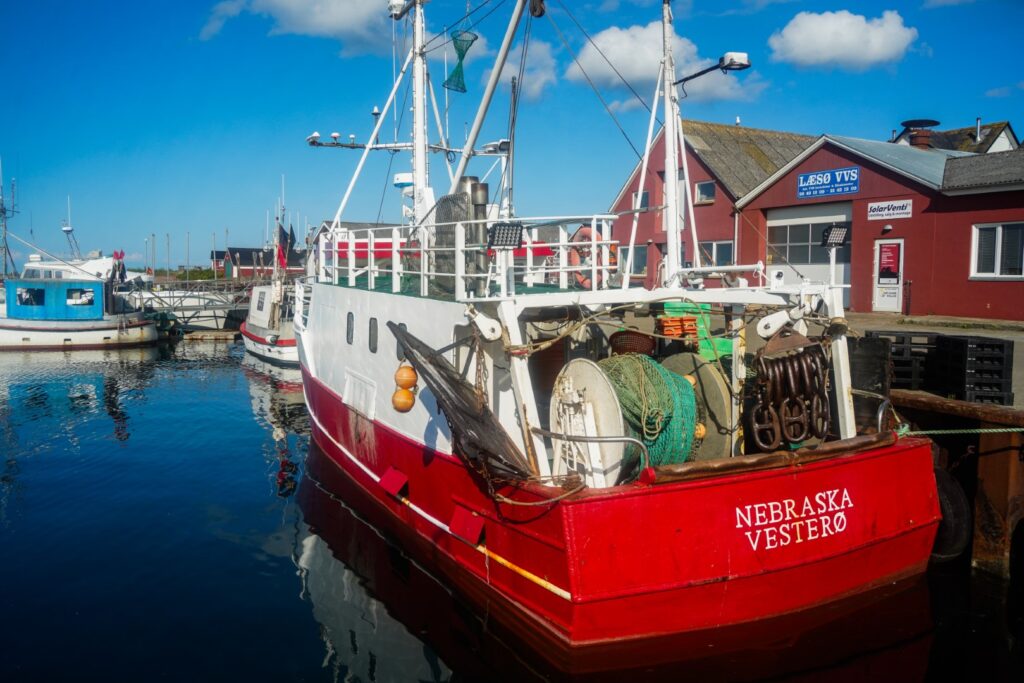
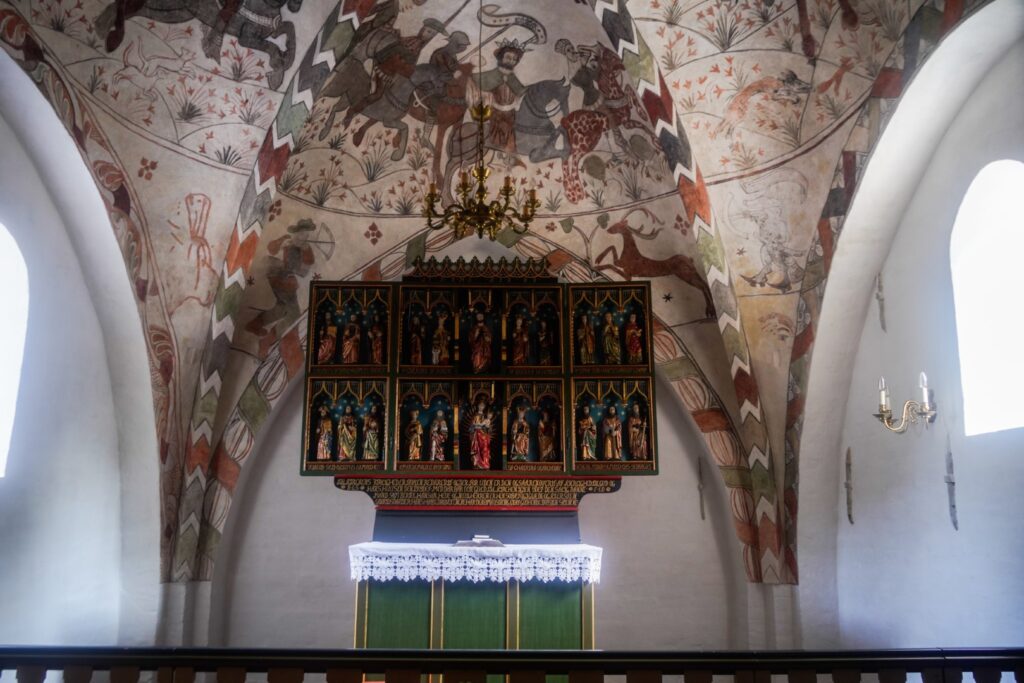
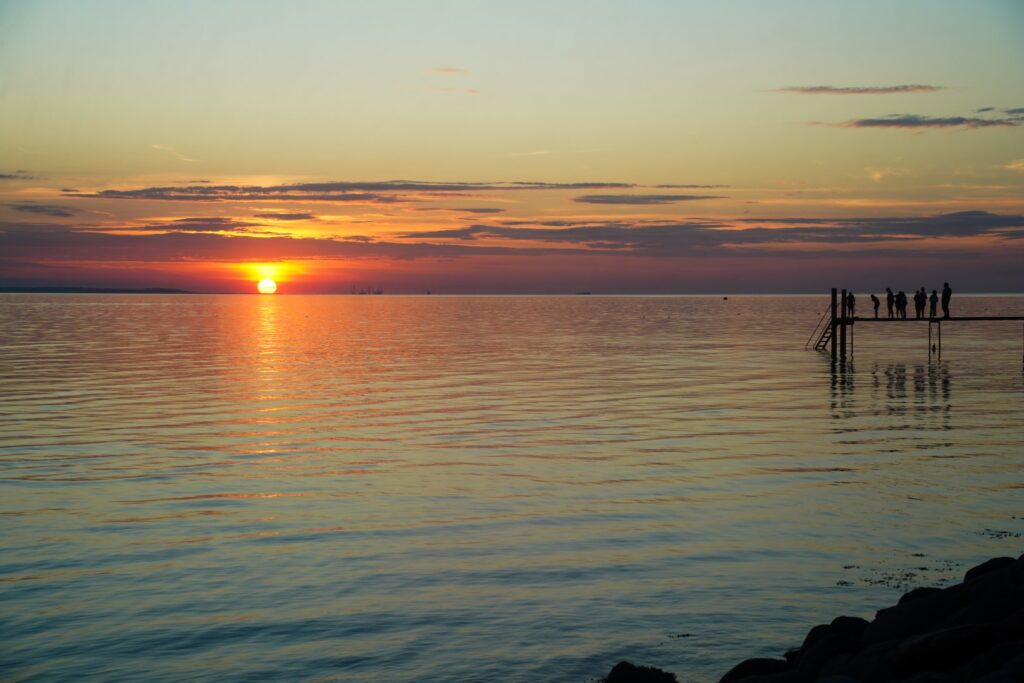

The next morning, it was time to leave Læsø, but our adventures didn’t end there. The next day, we sailed back to Frederikshavn on the mainland and then boarded a small boat to Hirsholm, the largest islands in the island group of Hirsholmene. But more about that later!
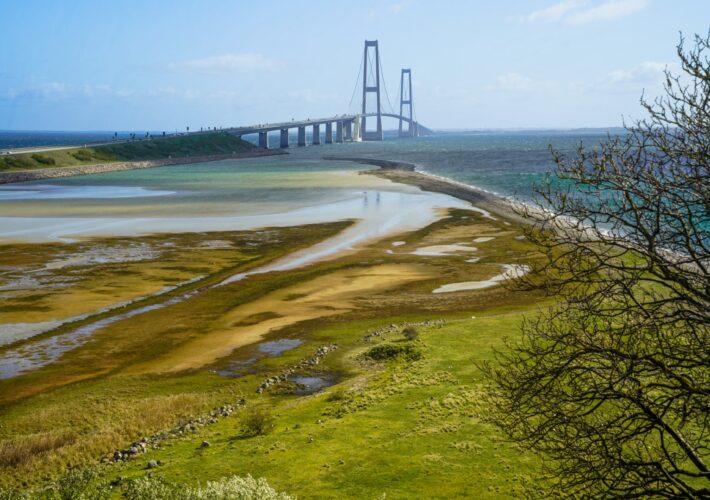
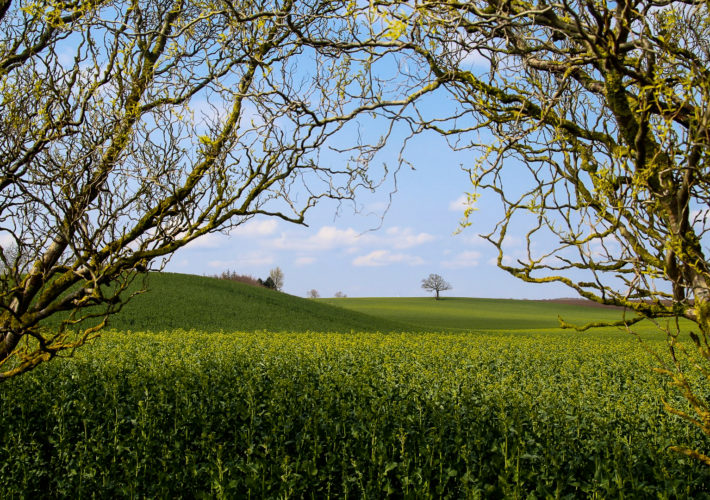

Leave a Comment